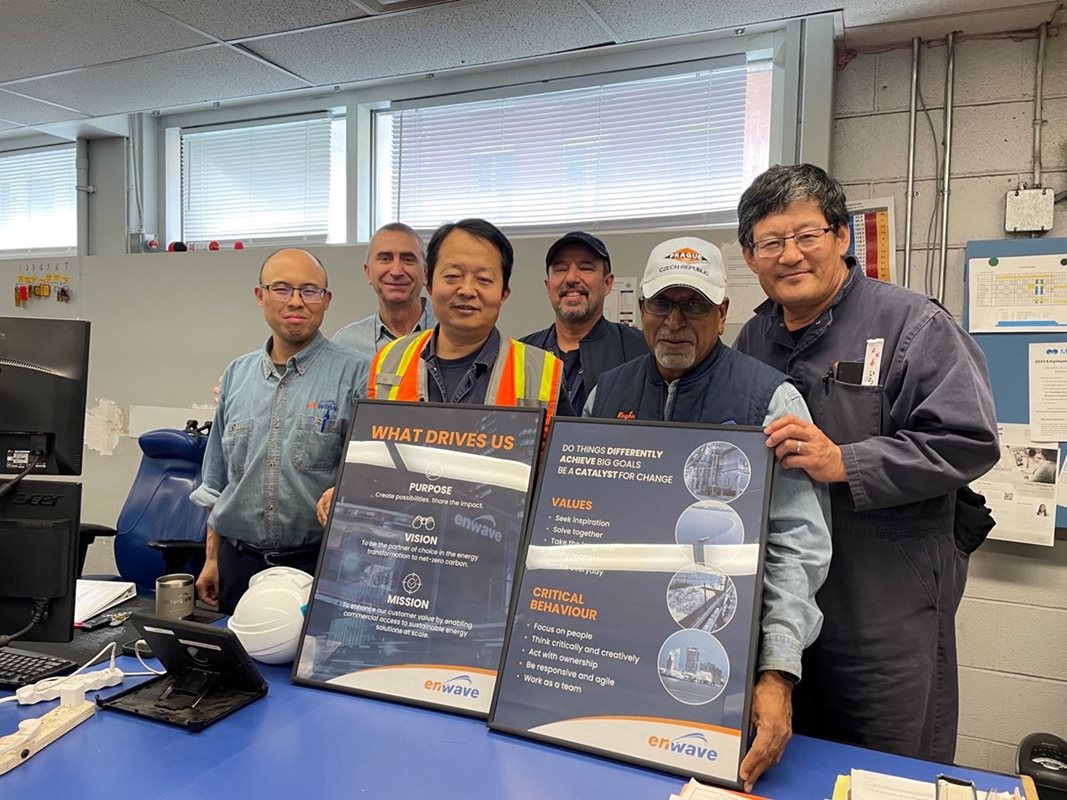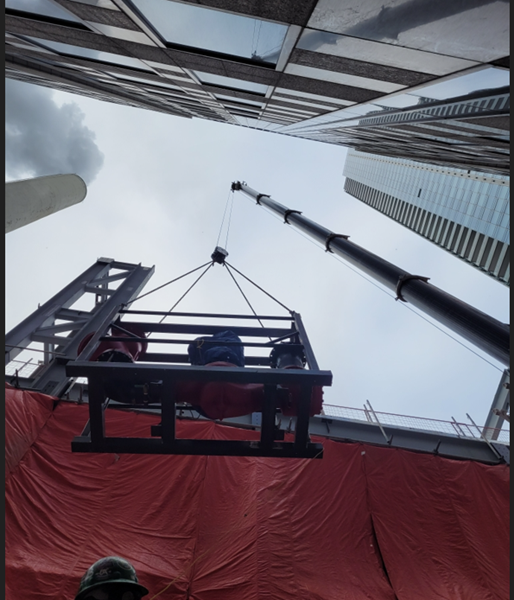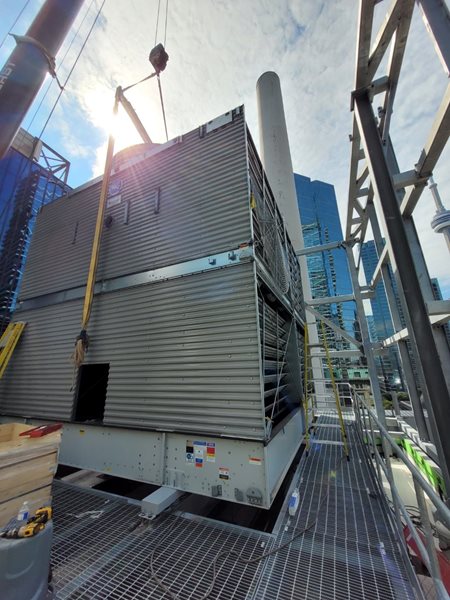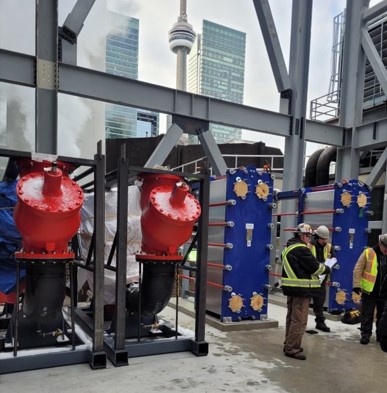
At the heart of the Toronto region, a quiet revolution in sustainable urban development is unfolding, driven by key players like Enwave Energy Corporation, who are leading the way in innovative energy solutions. Based in Toronto, Enwave is the largest core-competency district energy company in Canada. The company provides services such as heating, cooling, hot water, combined heat and power (CHP) and geothermal energy systems to over 700 customers, including commercial properties, municipalities, hospitals, data centres, and residential buildings.
As part of our Climate Champions series, we sat down with Konstantin Milkov, Pearl Street Energy Centre (PSEC) Chief Operating Engineer at Enwave, to explore how the company is propelling Toronto's climate economy forward.
Enwave's journey began with a vision to transform the city's energy landscape. Milkov recalls, "When I started at Pearl Street Energy Center in 2008, it was just a steam plant with high greenhouse gas emissions, no heat recovery equipment and no condensate return from customers." Fast forward to today, PSEC is undergoing a significant three-story expansion with the construction of a state-of-the-art heat pump plant that will generate Enwave Green Heat, becoming a beacon of efficiency and environmental stewardship.

Enwave is not only transforming its operations through its decarbonization journey, but has also established itself as a pioneer in the field. The company was the first in North America to implement Deep Lake Water Cooling (DLWC), a revolutionary system that uses cold water from Lake Ontario to cool buildings in downtown Toronto. Enwave’s DLWC is the largest system of its kind in the world. "Our Deep Lake Water Cooling system was a groundbreaking project," Milkov shares. "It has become a model for other cities looking to adopt sustainable cooling solutions."
One of Enwave's most innovative moves was the shift from steam to hot water for customer heating. "We began supplying hot water to customers for heating instead of steam," Milkov explains. Enwave is currently constructing a new heat pump plant at PSEC that is set to be operational next year. This plant will house two heat pumps, each with a staggering capacity of 1,800 tons. "We're using the waste heat from our Deep Lake Water Cooling system which we then supply to our customers as Enwave Green Heat. This is very green technology," Milkov shares with evident pride.
Enwave Green Heat provides customers with up to a 95% reduction in greenhouse gases associated with building heating through a simple connection to Enwave’s district system. In addition to the new heat pump plant at PSEC, Enwave has also constructed heat pumps at their Simcoe Street Energy Centre and Bay Adelaide Centre plants.

But Enwave didn't stop there. They've implemented an underground reservoir with a capacity of 2 million gallons of water that acts as a thermal battery at The Well, a new mixed-use development in downtown Toronto. This represents a crucial component in their energy management strategy. Milkov details, "During the summer, we charge the battery with cold water during off-peak hours, which is then used to support cooling operations during peak demand periods. In winter, the system is reversed, storing hot water at night for use during the day." Not only does this thermal battery have the ability to supply low-carbon heating and cooling to 17 million square feet of space, it also avoids 5 MW of electrical feed in the downtown core.
At the core of Enwave's operations is their district energy model. This system connects multiple buildings through an underground piping network, efficiently distributing heating and cooling across the city. "Instead of each building having its own boiler or chiller, we generate energy centrally and distribute it to our customers," Milkov explains. "It's more reliable, more energy efficient, and it eliminates a lot of headaches for building owners and operators."

Enwave’s innovative energy solutions are playing a vital role in shaping the economic landscape of Toronto’s waterfront. With the ability to deploy low-carbon thermal energy solutions at scale, Enwave’s district energy system makes the waterfront more attractive to companies and investors with a focus on sustainability. This infrastructure supports major developments, including condominiums, office spaces, and entertainment venues, contributing to the area’s revitalization and economic vibrancy. "Our work on the waterfront aligns with Toronto's growth while ensuring sustainability remains a core priority," says Milkov.
Enwave's influence in the sector also comes from its proactive approach to community engagement and education. The company understands that achieving sustainability goals requires not only technological innovation but also public awareness and participation. "Education is key," Milkov emphasizes. "It's about making people aware of what we're doing and how it benefits them and the environment."

Looking ahead, Enwave is set on expanding its climate tech initiatives, with a focus on geoexchange, heat pumps, and looking at thermal and electrical requirements more holistically. As Milkov puts it, "Steam is old technology. We're focusing on more sustainable, more reliable and more innovative solutions."
Enwave's commitment to sustainability is driven by a clear understanding of the challenges and opportunities presented by climate change. "Our approach is not just about meeting current energy needs but also about planning for the future," Milkov notes. "By focusing on long-term sustainability, we ensure that we remain at the forefront of the energy sector, setting an example for others to follow."
As Toronto continues its journey towards becoming a global leader in sustainable urban development, Enwave stands as a shining example of what's possible when innovation meets commitment. Their story is not just about energy provision; it's about shaping the future of our cities, one sustainable solution at a time.
The Climate Champions series spotlights our members who are leading experts in cleantech and climate innovation. As the global cleantech economy booms, the Toronto region has the potential to lead—driven by the organizations taking bold steps to green their operations and pioneer new technologies. This series celebrates the trailblazers propelling our region towards global climate leadership and a net-zero future by 2040.


